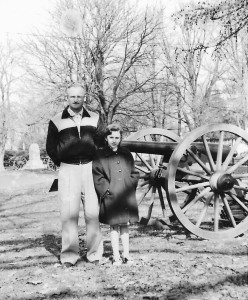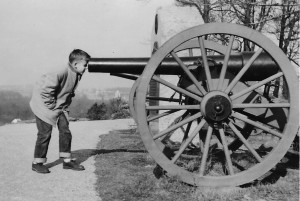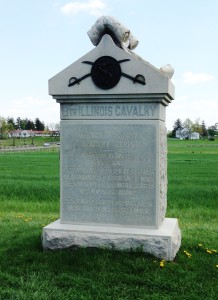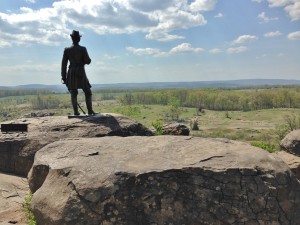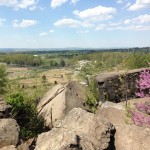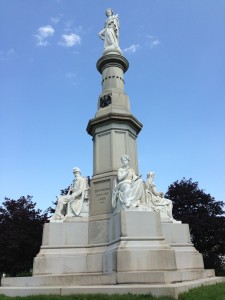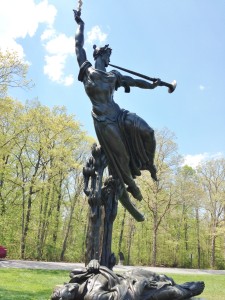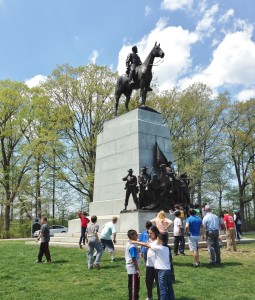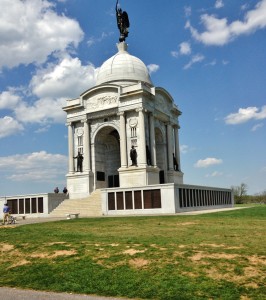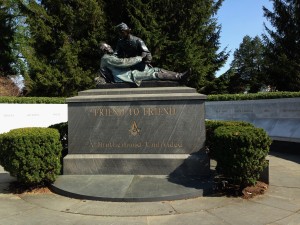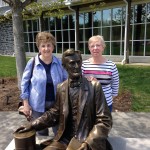 Writer’s Note: I had planned to write a post about Gettysburg on July 1, the date of Day One of that historic battle. However, my computer went all wonky and had to go to the computer hospital. So, please pretend it is July 1 instead of July 4 as you read this. Even so, it is a historic day for freedom, and the news lately has made it obvious that thoughts about this time are still controversial.
Writer’s Note: I had planned to write a post about Gettysburg on July 1, the date of Day One of that historic battle. However, my computer went all wonky and had to go to the computer hospital. So, please pretend it is July 1 instead of July 4 as you read this. Even so, it is a historic day for freedom, and the news lately has made it obvious that thoughts about this time are still controversial.
“But in a larger sense, we can not dedicate — we can not consecrate — we can not hallow — this ground. The brave men, living and dead, who struggled here, have consecrated it far above our poor power to add or detract. The world will little note, nor long remember, what we say here, but can never forget what they did here.”
Back in November, 1955, my family took a trip to the East Coast. I was nine and my brother was twelve.
(Our younger brother hadn’t arrived yet.) One of our early stops was in Gettysburg, Pennsylvania, to see the battlefield and the cemetery. I don’t remember a lot about that trip, although I kept a journal. We drove on the Pennsylvania Turnpike, newly expanded at the behest of President Eisenhower. My dad, I remember, was so excited about being able to drive down this new and vastly improved highway. (Since he voted conservative Republican in those days, he never missed a chance to remind us of Eisenhower’s accomplishments.)
In 1955, the Gettysburg Battlefield Visitor Center had an electronic map to show the different
battles. That was really high tech back then and I was enthralled. My family listened to a recording in the car as we moved from one place to another on the battlefield. Besides recalling the electronic map, I remember hearing that after Pickett’s Charge, sometimes only buttons were found remaining of some soldiers as they died facing the Union cannon. Now that idea would have stuck with a nine-year-old, I’m sure. As you can see from the photos, the world was black and white back then.
This May, I revisited the battlefield and found that everything had changed considerably. It was so much BIGGER than I remembered it: twenty square miles. A lot more preservation has taken place, and the visitor’s center has been replaced by a more modern facility with inter-active exhibit space. This time, my friend Mary and I were able to go on a tour with a park ranger who knew every detail of the battles and the battlefield.
A couple of the tidbits of history he imparted were that the term 4-F, in reference to being unsuitable for service in the infantry, came from the fact that a soldier needed four teeth in the front of his mouth—two above and two below—to tear open the powder cartridges. Since dental care wasn’t spectacular back then, many would-be soldiers didn’t get to fight. Another interesting detail he mentioned is that Jonathan Letterman, the medical director of the Union Army, ordered his surgeons and nurses to take care of the wounded from both sides. Once they were out of commission in the fighting, they became human beings, not enemies.
The Battle of Gettysburg took place from July 1 thru July 3, 1863, and it was the bloodiest battle of the war. Some historians say it “turned the tide of the war” because Lee was never able to successfully invade the North again. The battle raged both around and in the small town of Gettysburg. Today, you can see bullet holes in many of the walls of houses dating back to that year. Gettysburg would be considered a Union victory, but overall, it was actually a series of battles won by whoever had the higher ground. General George Meade was the commander of the Northern Army of the Potomac, and General Robert E. Lee was the commander of the Confederate Army of Northern Virginia. They met over three days near the tiny town of Gettysburg, Pennsylvania, and so many were wounded that the chaplains didn’t have time to say The Lord’s Prayer over a soldier before he died on the surgery tables.
Lee was coming from a victory at Chancellorsville and followed the Shenandoah Valley with a goal to destroy the Union army and convince the North to give up the fight. His army was in high spirits after their recent victory. The first day, the South routed the Union in a huge victory that saw the Union soldiers retreating through the town. On the second day, however, the Union lines held at the likes of Little Round Top, the Wheatfield, the Peach Orchard, Devils Den, Culp’s Hill, and Cemetery Hill.
Confederacy = 1 Union = 1
I took several photos from the top of Little Round Top, a key part of Day Two. It was amazing
to see the horribly long climb the Union soldiers would have to manage in order to bring cannon up to the top of that hill. They used ropes to haul the heavy weapons up a sheer cliff.
The third day saw the dramatic assault on Cemetery Ridge known as Pickett’s charge. 12,500 confederates charged the Union army and took huge losses. 18,000 died altogether, and eventually this day was considered a Union victory with Lee retreating and heading back home.
In all, the battle left approximately 51,000 soldiers dead and thousands wounded in three days of fighting. Back  then, soldiers didn’t wear dog tags, so it was often difficult to identify all the bodies. A more pressing consideration was getting them below ground in the sweltering July heat. The corpses had to be buried quickly, and the stench was horrible, considering the thousands of bodies left in the sun. They were often laid in shallow graves, later to be identified and buried or taken home. 3,000 horse carcasses also had to be burned from the three days of battle, leaving a terrible stench that made the townspeople sick.
then, soldiers didn’t wear dog tags, so it was often difficult to identify all the bodies. A more pressing consideration was getting them below ground in the sweltering July heat. The corpses had to be buried quickly, and the stench was horrible, considering the thousands of bodies left in the sun. They were often laid in shallow graves, later to be identified and buried or taken home. 3,000 horse carcasses also had to be burned from the three days of battle, leaving a terrible stench that made the townspeople sick.
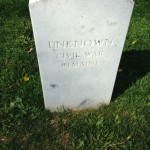 That same year, on November 19, Lincoln spoke at Gettysburg, an eloquent oration of only ten
That same year, on November 19, Lincoln spoke at Gettysburg, an eloquent oration of only ten  sentences. The cemetery dedication was only the beginning of the work to be done. The Gettysburg Cemetery holds approximately 3,500 Union soldiers, 1632 in unmarked graves. The mass graves hold 40% of Union unknowns and 90% of Southern unknowns. I thought, as we walked through the cemetery, that it would have been a terrible thing back then to be a mother of sons and not know.
sentences. The cemetery dedication was only the beginning of the work to be done. The Gettysburg Cemetery holds approximately 3,500 Union soldiers, 1632 in unmarked graves. The mass graves hold 40% of Union unknowns and 90% of Southern unknowns. I thought, as we walked through the cemetery, that it would have been a terrible thing back then to be a mother of sons and not know.
Today, the national park is filled with breath-taking memorials, 1320 monuments/markers as of 2008, many of them paid for, designed, and placed there by both Northern and Southern groups. I’ve included below a few photos of memorials
because they are such elegant, graceful reminders of a difficult and bloody time in our history.
I enjoyed the opportunity to walk over some ground that I had also traversed fifty-nine years ago. As an adult, I can appreciate the terrible price that was paid over these three days in Gettysburg. As a child, I simply knew this was a historical place where a lot of monuments had been placed to honor the dead.
I imagine it is the difference between seeing it in black and white and seeing it in color.

